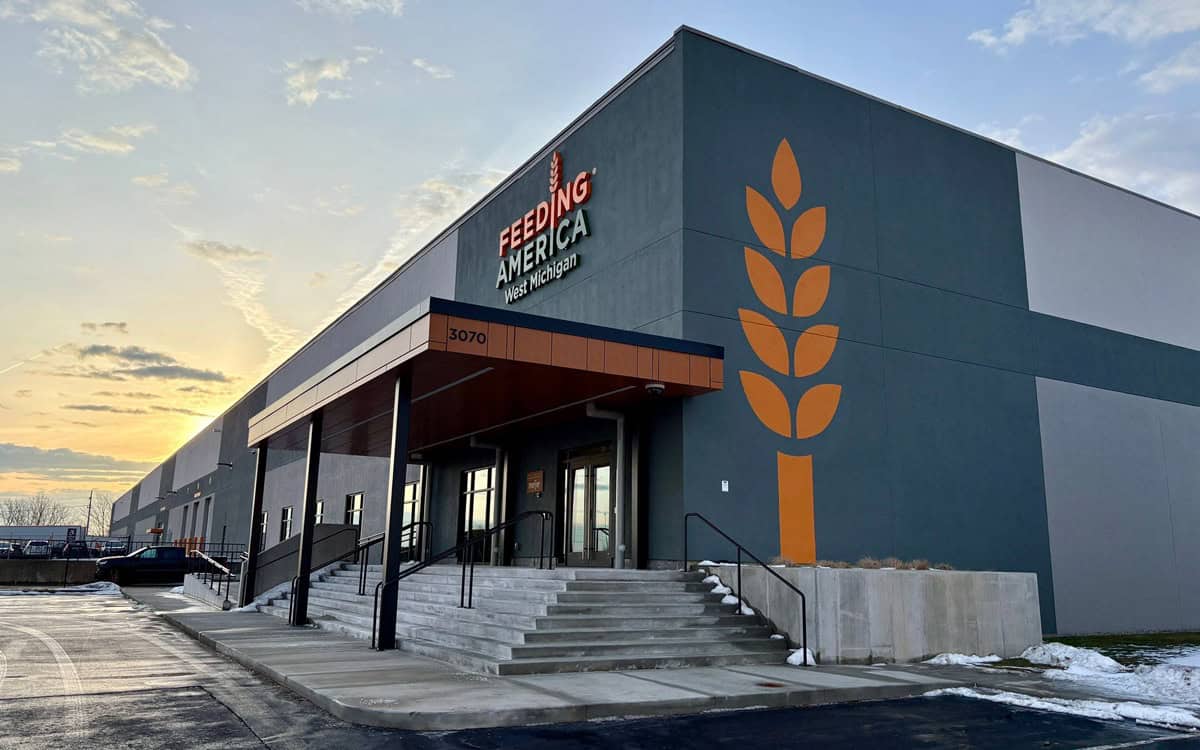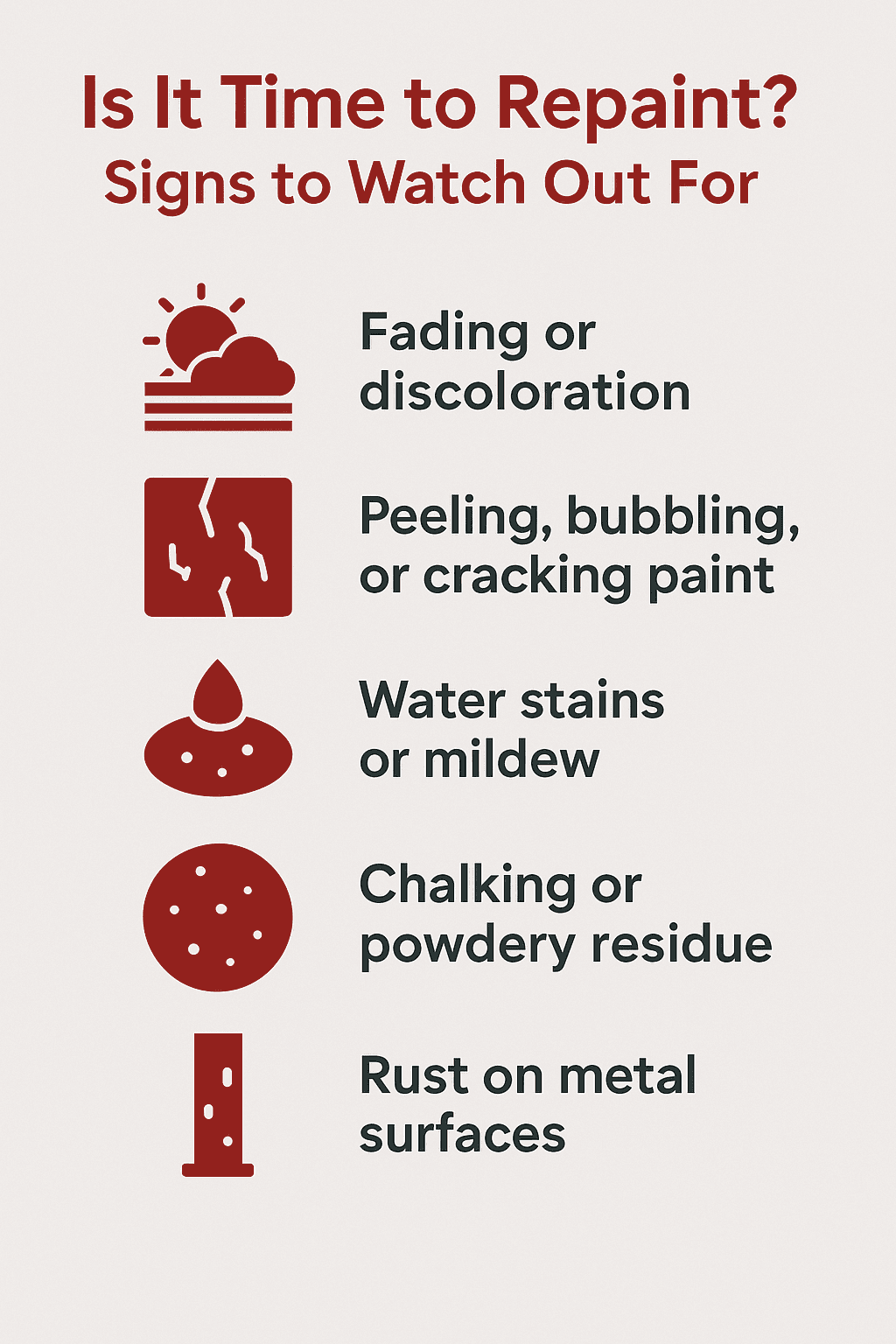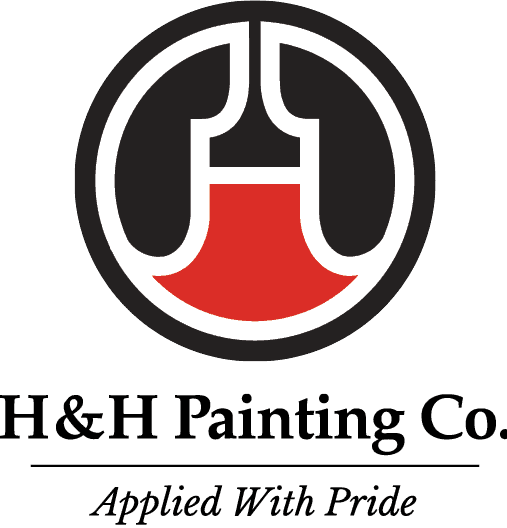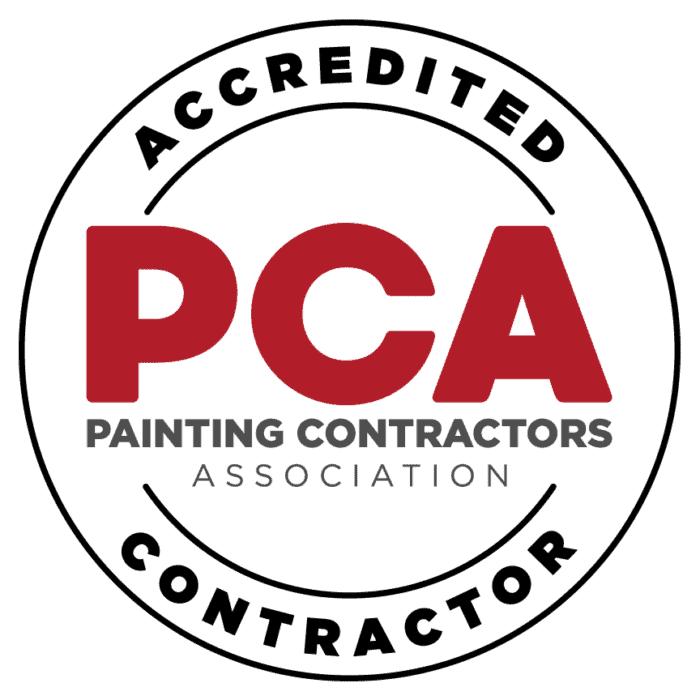If you’re thinking about scheduling your next exterior commercial painting project, you might be wondering how often to repaint a commercial building. The answer isn’t one-size-fits-all, but understanding the key factors can help you maintain your property’s appearance, protect your investment, and attract more customers.
Let’s break down what you need to know.
Key Takeaways:

First Impressions Matter: Why Paint Speaks Volumes
Think of your commercial building as your brand ambassador—it’s the first thing customers notice and often the last thing they remember. A crisp, well-maintained exterior can inspire trust and make your business more approachable. On the other hand, chipped or faded paint might send the wrong message, no matter how great your services are inside.
But it’s not just about aesthetics. Exterior paint acts like armor for your building, shielding it from sun, rain, snow, and pollution. Without that layer of protection, you’re inviting bigger problems like rusted metal, rotting wood, and structural decay that cost way more than a paint job to fix.

Factors That Affect Your Repaint Schedule
Here’s what influences how often to repaint a commercial building:
1. Climate and Weather
Where your building is located plays a huge role in how often it needs repainting. In regions with scorching sun, salty coastal air, heavy humidity, or frequent storms, exterior paint tends to degrade faster. UV rays can bleach vibrant colors in just a few years, leaving your building looking tired. Meanwhile, consistent moisture can creep into cracks, causing bubbling, peeling, and mold.
Even seasonal temperature swings can do damage—paint expands and contracts, which leads to cracking over time. If your property sits in a climate that swings from hot summers to icy winters, expect to repaint more frequently than buildings in mild, stable regions.
2. Location and Traffic
Your building’s exact spot on the map can speed up wear and tear in surprising ways. Properties located on bustling city streets, near highways, or in industrial zones are exposed to higher levels of exhaust fumes, airborne dust, and pedestrian contact. Over time, all of that grime sticks to your facade, dulling your building’s appearance and wearing down the protective layer of paint.
High-traffic areas also see more physical interaction—think shopping centers, restaurants, or storefronts with heavy foot traffic. These areas are more prone to scratches, dents, and accidental spills that compromise the paint’s integrity. If your business is in a high-visibility or high-contact zone, it’s smart to plan for more frequent touch-ups or full repaints to keep it looking sharp and professional.
3. Paint Quality and Application
Higher-quality paint lasts significantly longer, offering better resistance to fading, cracking, and mildew. Paired with professional application, it creates a durable seal that stands up to the elements. Expert painters know how to properly prep surfaces, apply the right number of coats, and follow drying times—all of which extend the paint’s lifespan.
On the flip side, using bargain paint and skipping prep work can mean your exterior starts to flake or fade in just 2–3 years, leading to more frequent and costly repaints
4. Color Choice
Darker colors absorb more sunlight, which accelerates the fading process. Over time, these rich tones can become dull, patchy, or uneven in appearance—especially on sides of the building that get full sun exposure.
Bold hues like deep blues, reds, or blacks tend to lose their vibrancy faster than lighter, neutral tones. If your building features a dark or dramatic color scheme, you may need to repaint more frequently to keep that crisp, eye-catching look intact.
5. Previous Prep Work
Was the surface properly primed before painting? Proper priming is critical—it helps paint adhere better, creates a uniform surface, and prevents moisture intrusion. Skipping this step or using the wrong primer for the surface type can shorten the lifespan of your paint job significantly. Inadequate priming can lead to blistering, peeling, and uneven coverage, which not only looks unprofessional but also demands an earlier repaint.
Try Our Repaint Frequency Calculator!
Want a tailored estimate? Use this simple tool to calculate when you should schedule your next exterior commercial painting project:
Commercial Building Repaint Calculator
Note: This is just a general guideline. This tool is intentionally simple and meant to guide, not replace, a professional consultation. For a more accurate assessment, schedule an inspection with a pro.
Signs It’s Time to Repaint
You don’t always need to rely on a timeline. Watch for these visual signs:

How to Extend the Life of Your Paint Job
To get the most from your exterior commercial painting investment:
- Pressure wash your building 1–2 times a year. This helps remove dirt, mildew, and pollutants that degrade your paint and siding.
- Address minor damage promptly. Small cracks or chips can lead to bigger issues if left untreated, so patch them early.
- Choose paint made for your building type and region. Climate-specific and surface-appropriate paint improves longevity and performance.
- Work with experienced commercial painters. Professionals ensure better prep, cleaner results, and longer-lasting paint jobs.
Keep Your Business Looking Its Best
Still wondering how often to repaint a commercial building? Most properties fall within the 5–10 year range—but don’t wait until your paint is falling off. Stay proactive, and your building will reflect the professionalism of your brand.
Need expert advice or a fresh coat of paint? Contact H&H Painting Co. today at 269-748-0933. We’ll help you make the right impression—every time someone pulls into your lot.





